Natural Essential Oil Kitchen and Bathroom Spray Surface Cleaner Recipe
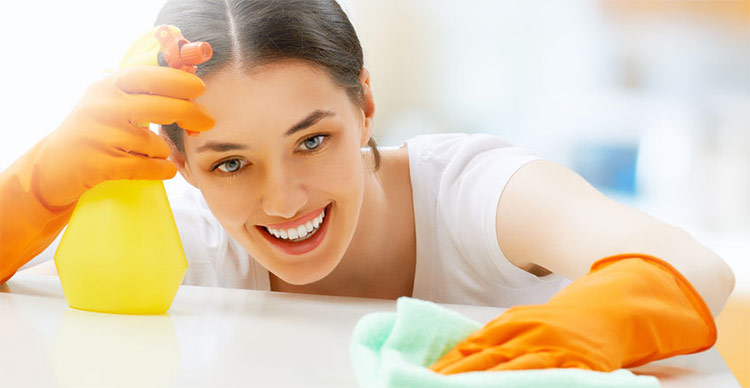
Essential oils not only smell wonderful (most anyhow!), but essential oils like lemon and orange can help dissolve grease while oils like lavender, tea tree, frankincense, cedar and thyme can help kill germs and keep your surfaces clean.
Handcrafted surface sprays such as the one made using this recipe, however, will not be as effective as commercial products that have been formally tested to kill 99.9% of bacteria and viruses.
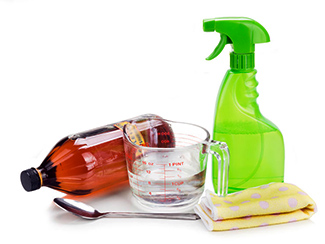
It's easy to make your own natural essential oil spray surface cleaner and customize it to use your preferred essential oils. This recipe will get you started!
Ingredients and Packaging
- 16 fl. oz. PET Plastic or Glass Bottle with Sprayer Top (See above for sourcing information).
- 14 fl. oz. Water
- .5 - 1 fl. oz. White Vinegar
- 60 drops Essential Oil
- Solubilizer such as Polysorbate 20 or Solubol. (For the solubilizer that you choose, follow the usage guidelines provided by your vendor or the manufacturer.)
Where to Find Suitable Spray Bottles
It is okay to use PET plastic for spray cleaners as the cleaner contains mostly water and only a fraction of essential oil. You can tell if the bottle is made of PET plastic by looking for the symbol on the bottom of the bottle. Although you can purchase glass bottles with sprayer tops, I do not recommend using glass bottles for spray cleaners. Often when spraying, you may move swiftly and may have a greater risk of dropping the bottle or bumping it into something and breaking it.
Amazon.com sells empty spray bottles. Below is a link to a 16 fl. oz. PET plastic spray bottle that I have been using successfully.
16 fl. oz. Pet Plastic Clear Spray Bottle
If you click on this link and purchase through Amazon, AromaWeb will earn a small commission. Thanks in advance!
Essential Oil Blend Suggestions
Blend Option #1
- 25 Drops Lemon
- 25 Drops Lavender
- 10 Drops Peppermint
Blend Option #2
- 20 Drops Frankincense
- 20 Drops Lemon
- 20 Drops Orange
Blend Option #3
- 30 Drops Cedarwood
- 20 Drops Orange
- 10 Drops Grapefruit
To Make
Add the water and white vinegar ato your 16 fl. oz. spray bottle. Shake well. The recipe makes only approx. 15 fl. oz. of cleaner so that you have ample room on the bottle to shake the mixture thoroughly before and during each use.
Combine the essential oils with the solubilizer following the usage instructions provided by the vendor/manufacturer. Then, add to the bottle that contains the spray bottle.
Properly put the sprayer onto the bottle and shake very well.
For a More Soapy Consistency (Optional)
If you find that you would like your surface cleaner to be slightly soapy in consistency, you can experiment by replacing .5 fl. oz. of the water with castile soap.
White Vinegar vs. Apple Cider Vinegar
White vinegar is recommended as it is more translucent and is more suitable for use in a cleaning spray. Additionally, apple cider vinegar can contain natural particles that could potentially clog your sprayer or land on your surfaces. I prefer to use white vinegar for my cleaning applications and save my apple cider vinegar for my nutritive and culinary applications.
To Use
Before and during each use, shake the mixture well.
Important Precautions: Before you use the spray on each new surface, do a spot check on an inconspicuous area, and allow ample time for it dry to ensure that the essential oils and vinegar do not damage the surfaces you intend to clean. Once you are sure that the spray is suitable for your surfaces, apply and use as you would any other surface cleaner.
Handcrafted surface sprays such as the one made using this recipe will not be as effective as commercial products that have been formally tested to kill 99.9% of bacteria and viruses.
General Safety Information
These recipes are offered for educational purposes only. Before using any essential oil, carefully read AromaWeb's Essential Oil Safety Information page. For in-depth information on oil safety issues, read Essential Oil Safety by Robert Tisserand and Rodney Young. Do not take any oils internally and do not apply undiluted essential oils, absolutes, CO2s or other concentrated essences onto the skin without advanced essential oil knowledge or consultation from a qualified aromatherapy practitioner. For general dilution information, read AromaWeb's Guide to Diluting Essential Oils. If you are pregnant, epileptic, have liver damage, have cancer, or have any other medical problem, use oils only under the proper guidance of a qualified aromatherapy practitioner. Use extreme caution when using oils with children and consult a qualified aromatherapy practitioner before using oils with children, the elderly, if you have medical issues or are taking medications.
Do You Need the Ingredients Listed in This Recipe?
You can find the essential oils, other ingredients and packaging that you need by patronizing the fine companies that support AromaWeb with their banner advertising located throughout AromaWeb (See them all at a glance within the Advertiser Spotlight area) and the listings located within the Aromatherapy Business Directory. Many of AromaWeb's advertisers also expertly formulate their own ready-made products if you decide you'd rather not make aromatherapy products yourself.
Do You Want More Essential Oil Recipes and Blends?
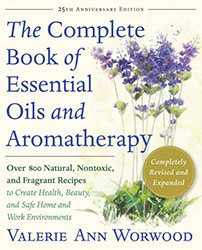
Over 800 Recipes!
The Complete Book Of Essential Oils & Aromatherapy
Author: Valerie Ann Worwood
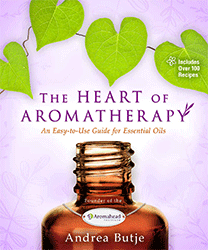
Over 100 Recipes!
The Heart of Aromatherapy
Author: Andrea Butje
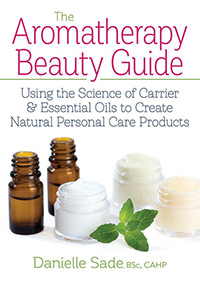
100 Recipes!
The Aromatherapy Beauty Guide
Using the Science of Carrier & Essential Oils to Create Natural Personal Care Products
Author: Danielle Sade, BSc, CAHP
Visit AromaWeb's Books area to find details about many other essential oil and aromatherapy books.
